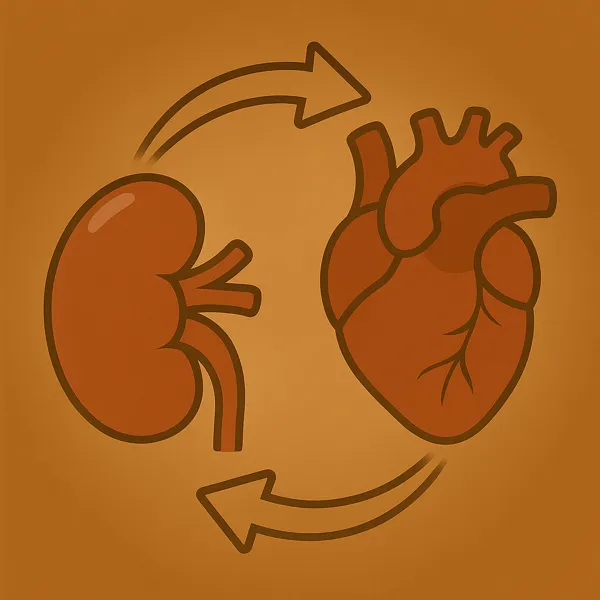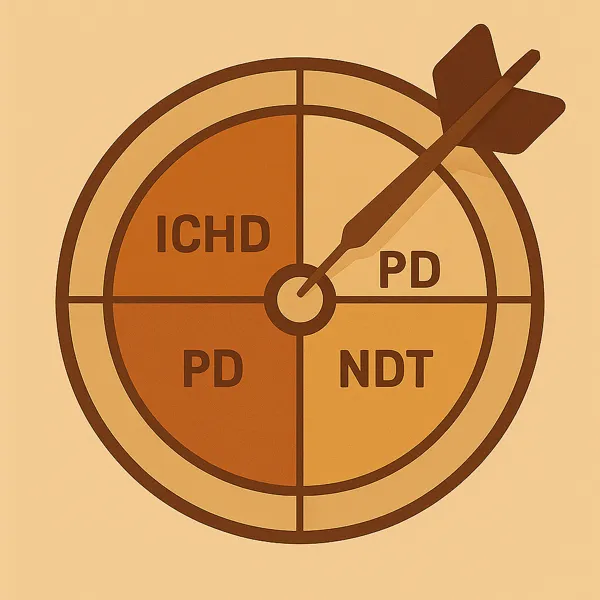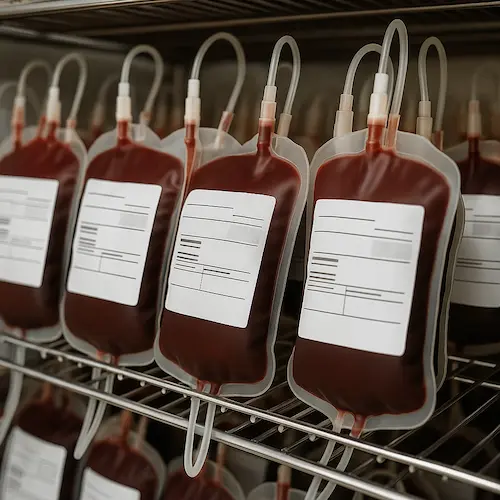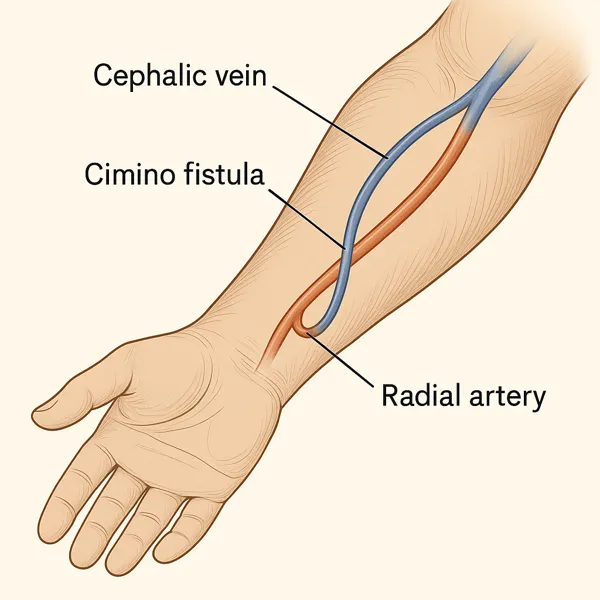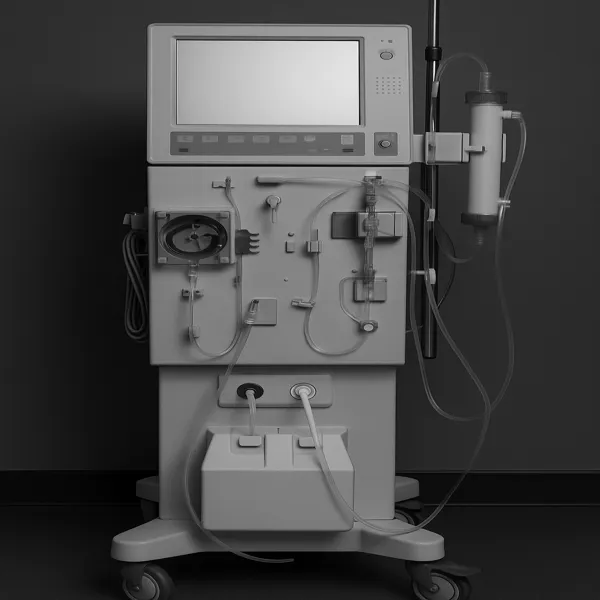Next Best Steps After a CKD Diagnosis: Initial 3 Step Nephrology Evaluation
Basic Expectations After a CKD Diagnosis
A new CKD diagnosis can feel abstract at first. For many patients, it arrives quietly—a note on a lab report, a few words during an annual physical, or a comment like, “Your kidney numbers are a little off.” And then comes the question that lingers: What does this actually mean?
In most cases, the provider who identifies a kidney problem with consult with a kidney specialist, the nephrologist. Generally speaking, the nephrologist will consider the following initial evaluation steps with an initial consultation depending on prior workup and records included with the consultation request from the referring provider.
- Take a detailed history and physical, including blood pressure and weight.
- Review existing lab results and order additional blood and urine testing as needed.
- Interpret existing radiology reports and order addition kidney imaging as indicated.
The Deep Dive into Diagnosing CKD

After thoughtful review of the steps and studies that brought you this far, the nephrologist will determine what warrants follow-up testing. These tests aren’t just routine—they’re designed to build a clinical roadmap. Your kidney team uses them to assess:
- How much kidney function remains
- What might have caused the damage
- Whether your condition is stable or progressing
- How the kidneys are affecting the rest of your body
Understanding the purpose behind each test empowers you to participate more actively in your care. Below is a breakdown of the most common tests performed after a CKD diagnosis, and what each one reveals about your health.
1. eGFR (Estimated Glomerular Filtration Rate)
This is the foundation of kidney monitoring. eGFR estimates how efficiently your kidneys filter blood, and it’s calculated based on your creatinine level, age, sex, and occasionally race.
- It helps classify CKD into stages (1 through 5)
- A normal eGFR is typically above 90
- CKD is defined when eGFR remains below 60 for three months or longer
- The test is repeated every 3 to 12 months depending on stage and stability
Tracking your eGFR over time is essential—it reflects the overall trajectory of your kidney health. In fact, the trend over time can prove to be much more significant that the absolute value of the eGFR.
2. Urine Albumin-to-Creatinine Ratio (UACR)
This test measures protein in the urine, one of the earliest signs of kidney damage. Even small increases (known as microalbuminuria) can signal stress on the filtration system.
- Requires only a spot urine sample (not a full 24-hour collection)
- Elevated UACR levels indicate glomerular damage
- Strong predictor of disease progression and cardiovascular risk
- Helps guide decisions about medications like ACE inhibitors or ARBs
The combination of eGFR and UACR helps stratify your risk and personalize your treatment plan after a CKD diagnosis.
3. Serum Creatinine
Creatinine is a byproduct of muscle metabolism. The kidneys filter it from the blood, so rising levels often reflect declining function.
- Used in eGFR calculations
- May fluctuate slightly due to hydration, exercise, or acute illness
- Often repeated with eGFR to track consistency
Creatinine on its own isn’t enough to diagnose CKD, but it plays a central role in monitoring.
4. Blood Pressure Monitoring
High blood pressure is both a cause and effect of CKD. Managing it tightly can prevent further damage.
- Home monitoring is often recommended
- Target blood pressure is usually under 130/80 mmHg
- Medications may be adjusted based on readings
- Lifestyle changes (like sodium restriction) support long-term control
After a CKD diagnosis, your blood pressure becomes one of the most important numbers to follow.
5. Blood Electrolytes and Minerals
As CKD advances, your kidneys may struggle to regulate critical minerals and electrolytes. These lab values help detect imbalances that could cause complications:
- Potassium: Too much can lead to dangerous heart rhythms
- Sodium: Affects hydration, blood pressure, and fluid retention
- Phosphorus & Calcium: Imbalances can contribute to bone weakening or vascular calcification
Monitoring these markers helps your provider prevent secondary complications that can develop after a CKD diagnosis, especially in later stages.
6. Hemoglobin and Iron Studies
Your kidneys play a key role in making erythropoietin, a hormone that stimulates red blood cell production. This is an effect of your CKD diagnosis, not a cause in most cases. In CKD, this signaling between the kidneys and the bone marrow weakens, which may lead to anemia. You may be tested for:
- Hemoglobin: Measures red blood cell levels
- Ferritin & Iron Saturation: Reveal iron stores and utilization
Anemia is common even in early CKD and can cause symptoms like fatigue, weakness, and shortness of breath. Addressing it early improves energy and quality of life.
7. Kidney Imaging
For many patients, the CKD diagnosis comes without a clear cause. Imaging can help identify structural issues, such as:
- Obstruction (like kidney stones or scarring)
- Cysts or congenital abnormalities
- Asymmetry in kidney size or function
Most often, your provider will order a renal ultrasound—a safe, noninvasive, and widely available test. If greater detail is needed, a CT scan may follow. Imaging helps clarify whether the damage is longstanding, potentially reversible, or part of a different condition entirely.
8. When Indicated: Kidney Biopsy
In select cases, especially when symptoms don’t match the typical course of disease, your nephrologist may recommend a kidney biopsy to determine the primary cause for the CKD diagnosis. This involves:
- Using a fine needle to collect a small sample of kidney tissue
- Looking at the tissue under a microscope for signs of inflammation, scarring, or immune activity
Biopsies are generally reserved for complex or rapidly changing cases. They’re uncommon in the immediate aftermath of a standard CKD diagnosis, but they can offer critical insights if treatment decisions hinge on a precise cause.
Takeaway: Knowledge Is Your Ally
A CKD diagnosis marks the beginning of a new chapter in your health journey—but it doesn’t mean you’re powerless. These follow-up tests serve as tools, not judgments. They help your care team track progress, tailor treatment, and prevent complications long before symptoms appear.
Understanding what each test means equips you to ask better questions, recognize early warning signs, and work proactively with your nephrologist. Remember: CKD doesn’t move on its own. Monitoring and action—especially in the early stages—can help keep your kidneys working longer and your life more stable.
???? Works Cited
- KDIGO 2021 Clinical Practice Guideline for the Evaluation and Management of CKD. Kidney Int Suppl. 2021;11(1):S1–S115.
- National Kidney Foundation. Laboratory Tests for Kidney Disease. Accessed 2025.


